MotoQuest is excited to offer our one-way, end-of-season transporters for the first time since 2019. We are fortunate that the Canadian Border Services Agency (CBSA) has given us a reasonable path forward via their “Fully Vaccinated Traveller Exemption” to be able to offer these exciting relocation opportunities. MotoQuest is going to do our part to make sure the motorcycles are ready for the journey. Please understand that we cannot be responsible for making sure you meet all requirements for entry into Canada. It is solely the responsibility of the rider to make sure they meet all requirements for entry to Canada. If you are refused entry into Canada it is your own responsibility to deal with the outcome.
The CBSA is the one and only authority on what is required to enter into Canada for discretionary travel. In the interest of helping you, the rider, to understand the requirements to cross the border, we sent one of our seasoned Alaska guides to cross the border on August 9th. We asked him to document his experience in order to help our transporter riders by providing a first hand account of what needed to happen in order to gain entry into Canada. In addition to the below, it is your responsibility to familiarize yourself with the requirements released by the CBSA.
Check if you qualify for the fully vaccinated traveller exemption
General Requirements for International Visitors to Canada
Driving to or from Alaska through Canada
Below is an account from our Alaska guide, Tom Anderson, of his process of crossing the Canadian border. Please do not use this as an authority on the process: we provide this information only to show you the individual experience of our staff member, and to help you better understand the steps required.
This document contains information from a reconnaissance run that will make your crossing through the Canadian border smoother and easier. The first step in preparing for your border crossing is getting your documents in order. You will need to arrange the following items:
- Valid U.S. Passport
- Complete Vaccine Card
- CovidSecure app
- ArriveCan app
- Negative Covid test results less than 72hrs old before you cross the border
- Completed ArriveCan trip application
The first two items- a U.S. passport, and a complete vaccine card- should be self explanatory. You need to carry your original paper vaccine card and passport, not just a photo or photocopy. Don’t leave them at home. Your passport is all you will need to cross back into the USA.
The CovidSecure app (available from the App Store or Google Play) is used by airlines and covid testing services to streamline the testing results process. Download the app to your phone and set up an account before you fly to Alaska. Once you arrive at Ted Stevens International, head downstairs to baggage claim and proceed to the Covid testing station. Covid testing is no longer mandatory when arriving in Alaska, so the line will be short, if there’s one at all. Give the attendant your phone number or email address so that they may find your CovidSecure account.
You want to specifically ask for a Rapid Test. The rapid test is a molecular NAAT test that is approved by the Canadian government. You will have your results in 1-2 hours. Negative results? Congratulations! You now have less than 72 hours to get through the Canadian border.
The ArriveCan app streamlines the border crossing process. Sign up for an account with the same email address as your CovidSecure app. Applying for a trip permit is a lengthy process that I will share with screen captures of each page at the end of the document. You will need to have a hotel reservation for your first night to designate as part of your quarantine plan.
By completing the ArriveCan app travel declaration ahead of time and being thorough and organised with his paperwork, Tom Anderson’s border crossing went smoothly: the border agent reviewed his documents and ArriveCan application, approved his entry, and welcomed him to Canada. The border agent will give you a tag for your vehicle designating that you are in transit through Canada under the “Fully Vaccinated Traveller Exemption”. It is your responsibility to follow the rules for transit through Canada as outlined by the CBSA. Below are screenshots from Tom’s ArriveCan process. Everything is very intuitive overall.
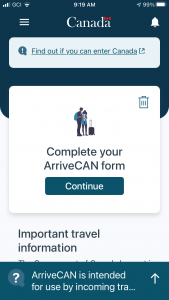
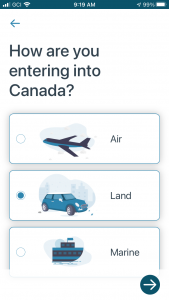
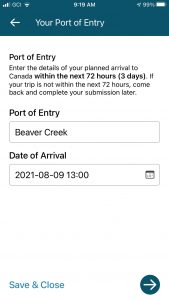
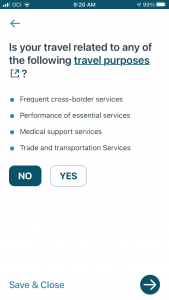
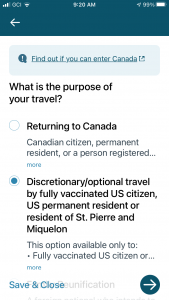
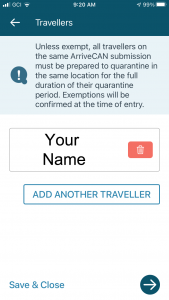
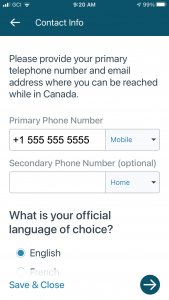
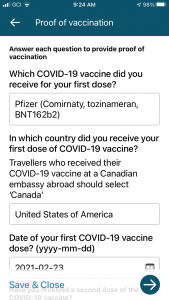
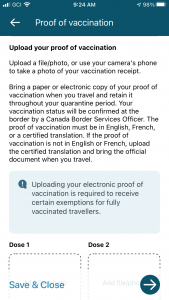
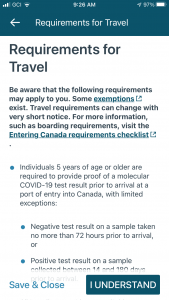
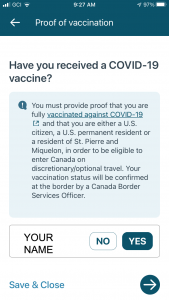
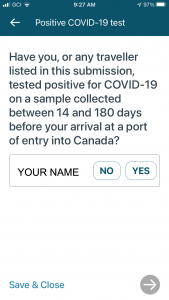
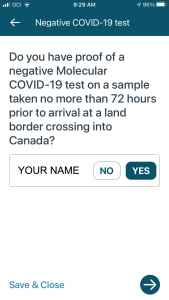
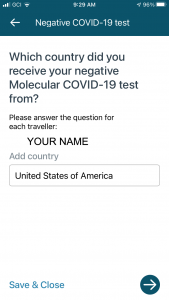
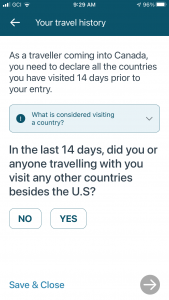
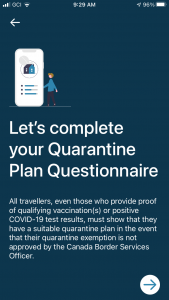
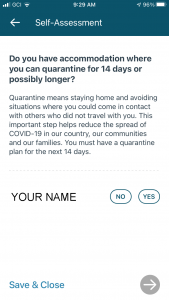
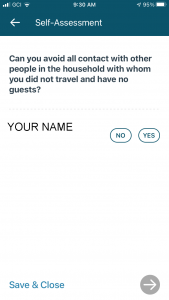
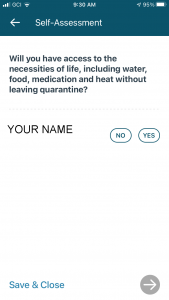
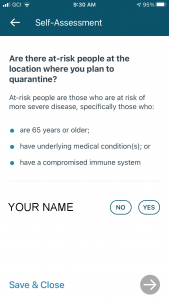
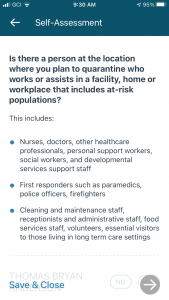
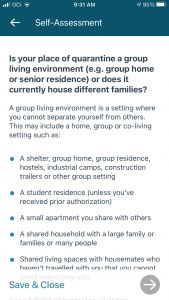
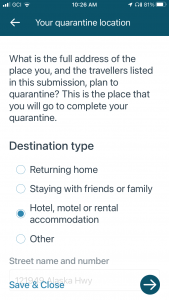
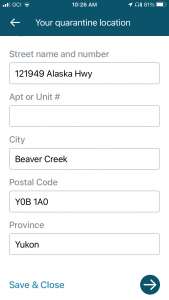
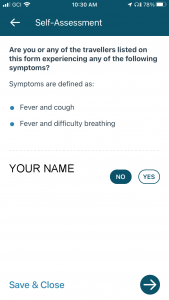
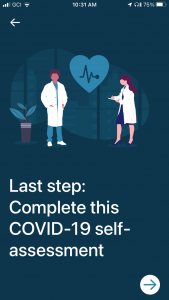
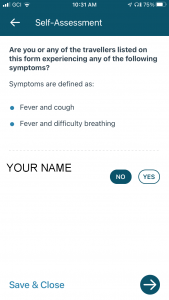
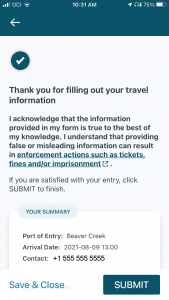
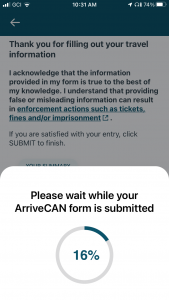
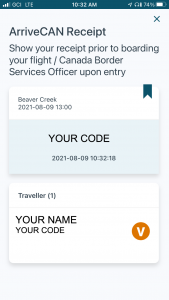
In closing, Tom has this advice for your transporters after they gain entry to Canada:
“As a transporter for MotoQuest, our number one goal is for you to have a safe and enjoyable ride. I would like to share with you my experience and recommendations as a guide for MotoQuest and Alaska for over 30 years. My number one recommendation would be to slow down and enjoy the ride. This trip is a marathon, not a sprint. Winter in the north is extremely hard on roads, no matter how well they are maintained. Potholes, frost heaves, broken pavement, and sections of gravel are the norm. It’s of the utmost importance that you are 100% focused on the road and potential hazards while riding. Pulling over to the side of the road for frequent breaks to enjoy the scenery and take photos makes memories that last a lifetime. My experience has been that a daily mileage goal from 250-350 miles a day gives you time to make frequent stops while keeping you mentaly sharp and fresh day after day.“
Our recommended itinerary for transit through Canada would be to follow our North to Alaska itinerary backwards out of Anchorage towards Portland.
